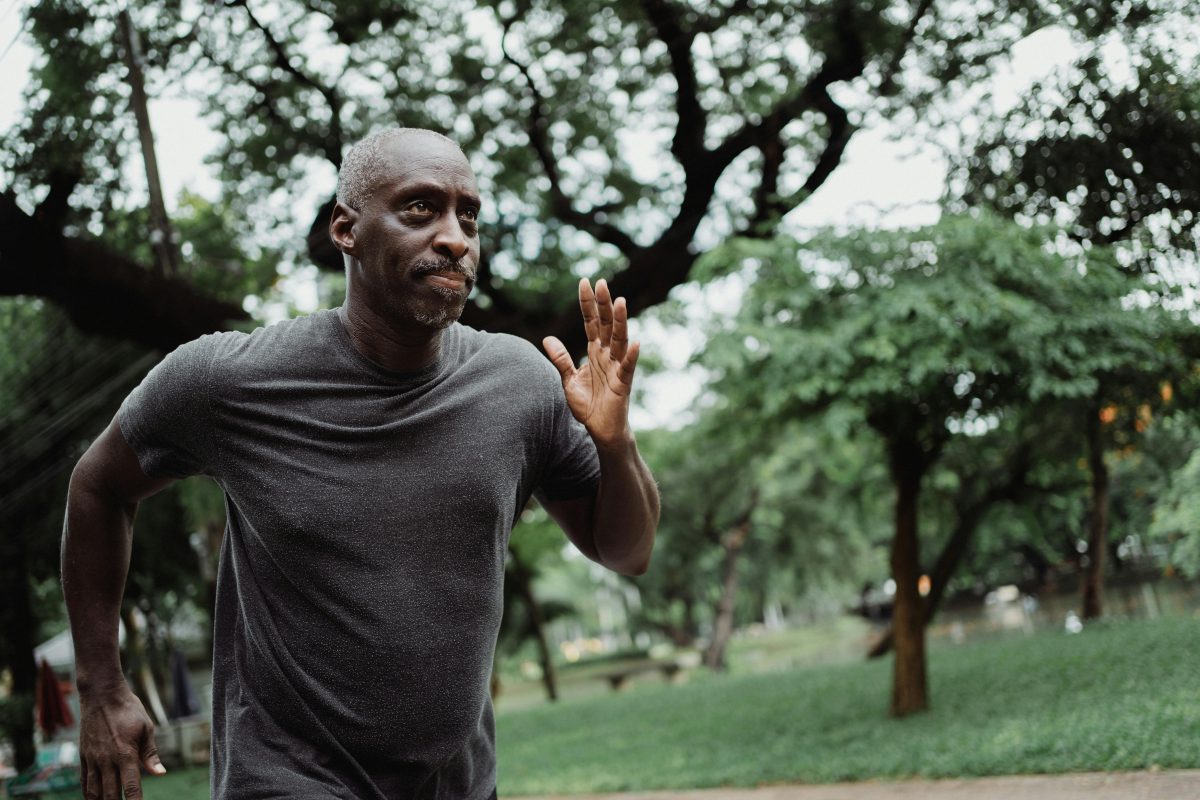Last Updated on: 14th July 2024, 09:30 am
Introduction to Running and Cycling

Running and cycling stand as pillars in the world of fitness, each offering a unique blend of history, benefits, and challenges. These activities have evolved from basic human needs into popular forms of exercise, embraced by millions for their health and recreational advantages. The journey of running and cycling through time reflects not just advancements in technology and understanding of human physiology, but also a growing awareness of the importance of physical well-being.
The comparison between running and cycling is more than a mere evaluation of calories burned or muscles toned; it’s an exploration of how each activity fits into individual lifestyles, goals, and physical capabilities. Whether you’re drawn to the simplicity and intensity of running or the speed and adventure cycling offers, understanding the nuances of both can guide you towards making an informed decision about which is better suited to your fitness aspirations.
Physical Health Benefits: Running vs. Cycling

- Cardiovascular Improvements
Running elevates the heart rate more quickly than cycling, offering a robust cardiovascular workout that strengthens the heart and lungs. Cycling, while gentler on the heart, still provides significant cardiovascular benefits, especially when performed at a high intensity or over longer distances. Both activities enhance aerobic fitness, but running might edge out cycling for those seeking rapid improvements in cardiovascular health. - Muscle Groups Targeted
Running primarily engages the lower body, targeting the quadriceps, hamstrings, glutes, and calves. Cycling, on the other hand, also works these muscle groups but places more emphasis on the quadriceps and glutes, especially when climbing hills or sprinting. Additionally, cycling can offer some upper body and core engagement as you stabilize and maneuver the bike. - Impact on Joint Health and Injury Risk
Running, a high-impact activity, can be tough on joints, particularly the knees and ankles, increasing the risk of injury over time. Cycling’s low-impact nature makes it a kinder option for joint health, reducing the risk of impact-related injuries and making it a sustainable choice for long-term fitness. - Weight Loss and Management Effectiveness
Both running and cycling are excellent for burning calories and can be effective for weight loss and management. Running may have a slight advantage due to its high-intensity nature, allowing for more calories to be burned in a shorter period. However, cycling’s lower impact means longer durations are possible, which can also contribute significantly to weight loss efforts.
Mental Health and Well-being: Running vs. Cycling

- Endorphin Release and Mood Enhancement
Both running and cycling trigger an impressive release of endorphins, often referred to as the body’s feel-good hormones. This natural mood lifter can lead to what many call a ‘runner’s high’ or a ‘cyclist’s euphoria,’ providing a sense of well-being and happiness. The psychological benefits are immediate, with each activity offering a unique pathway to mental clarity and emotional stability. - Stress Reduction Capabilities
The rhythmic, repetitive motions of running and cycling are profoundly meditative, reducing stress levels through physical exertion and focused breathing. Running, with its straightforward, pounding rhythm, offers a cathartic release, akin to shedding the day’s worries with every step. Cycling, on the other hand, demands constant attention and balance, providing a different kind of mental engagement that distracts from stressors, clearing the mind with the scenery’s passing blur. - Effects on Sleep Quality and Mental Alertness
Engaging in regular running or cycling can significantly improve sleep quality, leading to deeper, more restorative sleep cycles. This enhanced sleep quality directly impacts mental alertness and cognitive function, making daily tasks more manageable and improving overall productivity. The physical tiredness induced by these activities signals the body to rest, while the mental benefits help in winding down, preparing for a night of rejuvenating sleep.
Accessibility and Convenience: Running vs. Cycling

- Initial Costs and Ongoing Expenses
Running requires minimal investment to start; a good pair of shoes is your primary expense. Over time, you might choose to invest in quality athletic wear, but the entry barrier remains low. Cycling, in contrast, demands a higher initial outlay for a bike, helmet, and possibly, accessories and maintenance tools. Both activities incur ongoing costs, but cycling’s can be significantly higher due to equipment wear and tear. - Learning Curve and Skill Development
Running is instinctive, with most people able to start without formal training. It offers a straightforward path to improvement, primarily focused on endurance and speed. Cycling, while also accessible, requires mastering gear use and maintenance skills, alongside developing balance and road safety awareness. Both activities offer rich opportunities for skill advancement, catering to casual enthusiasts and competitive athletes alike. - Availability of Locations and Environmental Considerations
Running can be done almost anywhere, from city streets to rural trails, making it highly accessible. It’s also eco-friendly, with no emissions or significant environmental impact. Cycling, though slightly limited by the need for safe, navigable paths, encourages exploration and can cover greater distances, offering a different perspective on one’s surroundings. Both sports, however, promote outdoor activity and an appreciation for the environment. - Equipment and Space Requirements
Running’s simplicity extends to its space and equipment needs; your own two feet and open space are all that’s required. Cycling, conversely, requires a bike and, ideally, access to cycling paths or safe roads, plus storage space for the bike. While both activities are adaptable to various settings, running undoubtedly offers greater flexibility with minimal logistical concerns.
Social and Community Aspects: Running vs. Cycling

Opportunities for Group Activities and Social Events
Both running and cycling thrive on community spirit, offering numerous group activities and social events. Running clubs often host weekly runs, marathons, and fun runs, creating a supportive environment for runners of all levels. Cycling groups, on the other hand, organize group rides, races, and cycling tours, fostering camaraderie among cyclists. These gatherings not only motivate participants but also strengthen community bonds.
Comparison of Running Clubs and Cycling Groups
Running clubs typically focus on improving endurance and speed, welcoming individuals with varying abilities. They offer a straightforward way to connect, requiring little more than a pair of running shoes to join in. Cycling groups, while also inclusive, might necessitate a greater initial investment in equipment. However, they provide a unique social experience, exploring scenic routes and sharing technical knowledge.
Impact on Social Well-being and Community Involvement
The social interactions inherent in running and cycling significantly enhance one’s well-being. These activities encourage making new friends, reducing feelings of loneliness and isolation. Moreover, many clubs and groups engage in community service, such as organizing charity runs or rides, further enriching participants’ lives and fostering a sense of purpose. Ultimately, whether you choose running or cycling, the impact on social well-being and community involvement is profound, contributing to a healthier, more connected society.
Environmental Impact: Running vs. Cycling

Carbon Footprint of Running vs. Cycling
- Running requires no fuel but the energy from your body, making it virtually emission-free.
- Cycling, while also eco-friendly, may involve a small carbon footprint from the manufacturing and maintenance of the bicycle.
- Both activities pale in comparison to the emissions from cars, making them environmentally sound choices for transportation and exercise.
Sustainability of Equipment and Gear
- Running shoes and apparel, while less durable, have a smaller environmental impact in production than bicycles.
- The cycling industry is making strides in sustainability, with initiatives to recycle parts and promote eco-friendly materials.
- Both sports have seen a rise in eco-conscious gear, allowing athletes to choose products that align with their environmental values.
Contribution to Urban Mobility and Reduction of Traffic Congestion
- By choosing to run or cycle, individuals decrease the number of vehicles on the road, easing traffic and reducing pollution.
- Cycling, in particular, has the potential to replace car trips for longer distances, further alleviating urban congestion.
- Cities that invest in infrastructure for pedestrians and cyclists not only promote healthier lifestyles but also create more livable, sustainable communities.
Ultimately, both running and cycling offer environmentally friendly options that benefit personal health and the planet. They reduce our reliance on fossil fuels, lower traffic congestion, and encourage sustainable practices in manufacturing gear. As we strive for greener cities and healthier lives, incorporating running or cycling into our routines is a step in the right direction.
In Closing
Running and cycling both pave the path to wellness. They embody the joy of movement, offering unique benefits to every enthusiast. While running may quicken the heart, cycling allows for longer journeys, each fostering a deep connection between body and mind. These activities not only enhance physical and mental health but also encourage environmental stewardship and community engagement. Embrace the journey, and let your personal preference guide you towards a healthier, more fulfilled life.
Running Vs. Cycling: Which is Better for You? FAQs
Both running and cycling are effective for improving endurance, but the choice between them depends on the individual’s goals and physical condition. Running may improve endurance more quickly due to its high-intensity nature, requiring the body to adapt to the demands of sustained effort. Cycling, on the other hand, allows for longer duration exercises at a lower intensity, which can also significantly improve endurance over time.
Both running and cycling can significantly improve mental health by reducing stress, anxiety, and symptoms of depression. These activities increase the production of endorphins, often referred to as the body’s feel-good hormones. The choice between running and cycling for mental health benefits should be based on personal preference and physical condition.
Both running and cycling offer excellent cardiovascular health benefits, including improved heart health, increased stamina, and reduced risk of cardiovascular diseases. Running may offer these benefits in a shorter duration due to its high-intensity nature. However, cycling is also highly effective, especially for longer durations at moderate intensities, and is suitable for people seeking low-impact options.
Running generally burns more calories than cycling at a comparable intensity, making it potentially better for weight loss. This is because running engages more muscle groups than cycling, leading to higher calorie burn per unit of time. However, cycling is lower impact and might allow for longer duration workouts, which can also contribute significantly to weight loss efforts.
Running is often considered more time-efficient for improving cardiovascular fitness because it requires less time to achieve similar calorie burn and cardiovascular benefits compared to cycling. This is due to the higher intensity and greater muscle engagement in running. However, for individuals looking for lower impact options, cycling can provide substantial fitness benefits without the stress on joints associated with running.
Both running and cycling are beneficial for overall health, offering improvements in cardiovascular health, muscle strength, joint mobility, and mental well-being. The choice between them should be based on personal preference, physical condition, and specific health goals. Engaging in either activity regularly can lead to significant health benefits, with the best choice being the one that can be performed consistently and enjoyably by the individual.
Cycling has a lower risk of injury compared to running, primarily because it is a low-impact activity. Running has a higher incidence of stress injuries due to the constant impact on hard surfaces, which can affect joints and muscles. Cycling, being non-weight bearing, reduces the risk of impact-related injuries, making it a safer option for many people.
Cycling is better for building muscle, particularly in the lower body, than running. It specifically targets the quads, hamstrings, glutes, and calves, leading to muscle hypertrophy in these areas with resistance and hill training. Running, while it does engage the lower body muscles, is more of a cardiovascular workout and less effective at muscle building.
Cycling is better for joint health than running because it is a low-impact activity that places less stress on the joints. Running, especially on hard surfaces, can lead to joint wear and tear over time due to the repetitive impact. Cycling, being non-weight bearing, is particularly beneficial for individuals with existing joint issues or those looking to minimize joint stress.
Running is more accessible than cycling because it requires minimal equipment—essentially just a pair of running shoes. In contrast, cycling requires a bicycle, which can be a significant investment, along with potential maintenance costs. Additionally, running can be done almost anywhere, while cycling may require more specific locations such as parks or bike paths.
Orlando is a all round athlete from Australia, now resident in Germany. His sports of passion of American Football(Offensive line), weight training and indoor rock climbing where he uses his 195cm wing span to his advantage.



